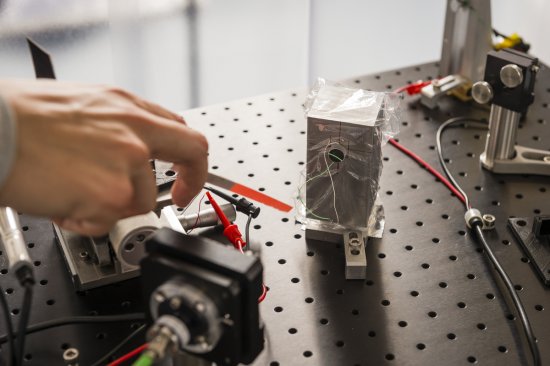Only available for non-commercial distribution
© CEA - CNES - CNRS - OSUPS - 2021
Reference
7362
MIRI - James Webb Telescope
NASA's new James Webb Telescope (JWST) is expected to revolutionise space observation. It was launched on 24 December 2021 from Kourou, French Guiana. After a 30 day journey, it reached the Lagrange point L2 at 1.5 million kilometres from the Earth in the opposite direction to the Sun. The long-awaited successor to Hubble, Webb is three times larger and has a mirror spanning more than six metres, becoming the world's largest orbital observatory. It took international teams more than 25 years to develop this technological marvel. Webb is so large that it took considerable engineering ingenuity to fold it up, together with its eighteen hexagonal mirrors, so that it fits into the Ariane V launcher's payload fairing. It unfolded like origami, offering unprecedented possibilities for observing galaxies that are both distant and ancient, as well as planetary systems in our own Milky Way. Once in position and properly deployed, it will be able to start using its four instruments. NIRCam, NIRSpec and Niriss are respectively a camera, a multi-object spectrometer and a wide-field spectrometer, all designed to operate in the near infrared. Developed in Europe, Miri (Mid-InfraRed Instrument) is a camera and spectrometer that operates in the mid-infrared from 5 to 28 micrometres covering a unique range of wavelengths crucially important for astrophysics, and allowing us to see previously invisible elements.
Duration
Production year
Définition
Color
Sound
Version(s)
Original material
The use of media visible on the CNRS Images Platform can be granted on request. Any reproduction or representation is forbidden without prior authorization from CNRS Images (except for resources under Creative Commons license).
No modification of an image may be made without the prior consent of CNRS Images.
No use of an image for advertising purposes or distribution to a third party may be made without the prior agreement of CNRS Images.
For more information, please consult our general conditions














